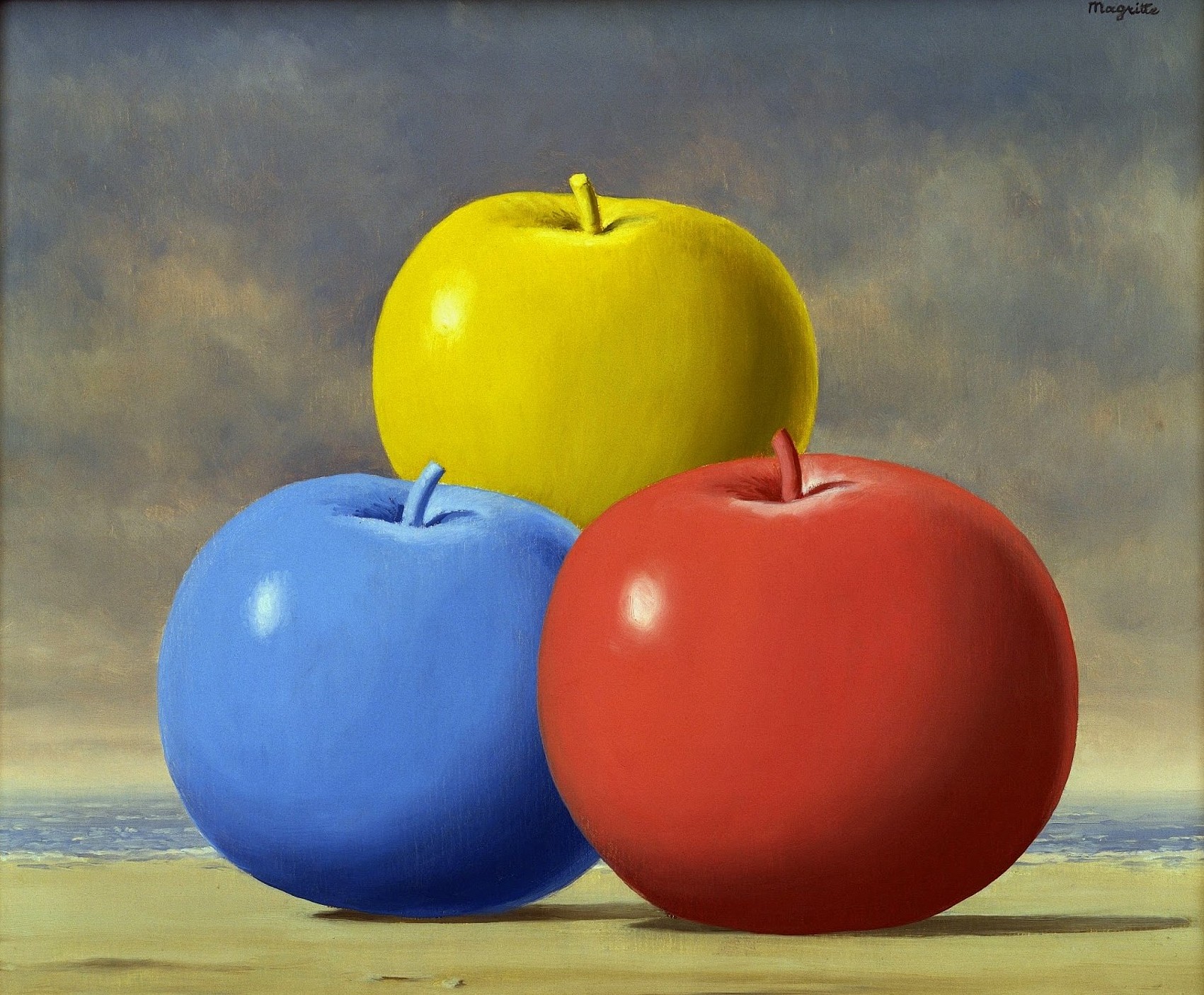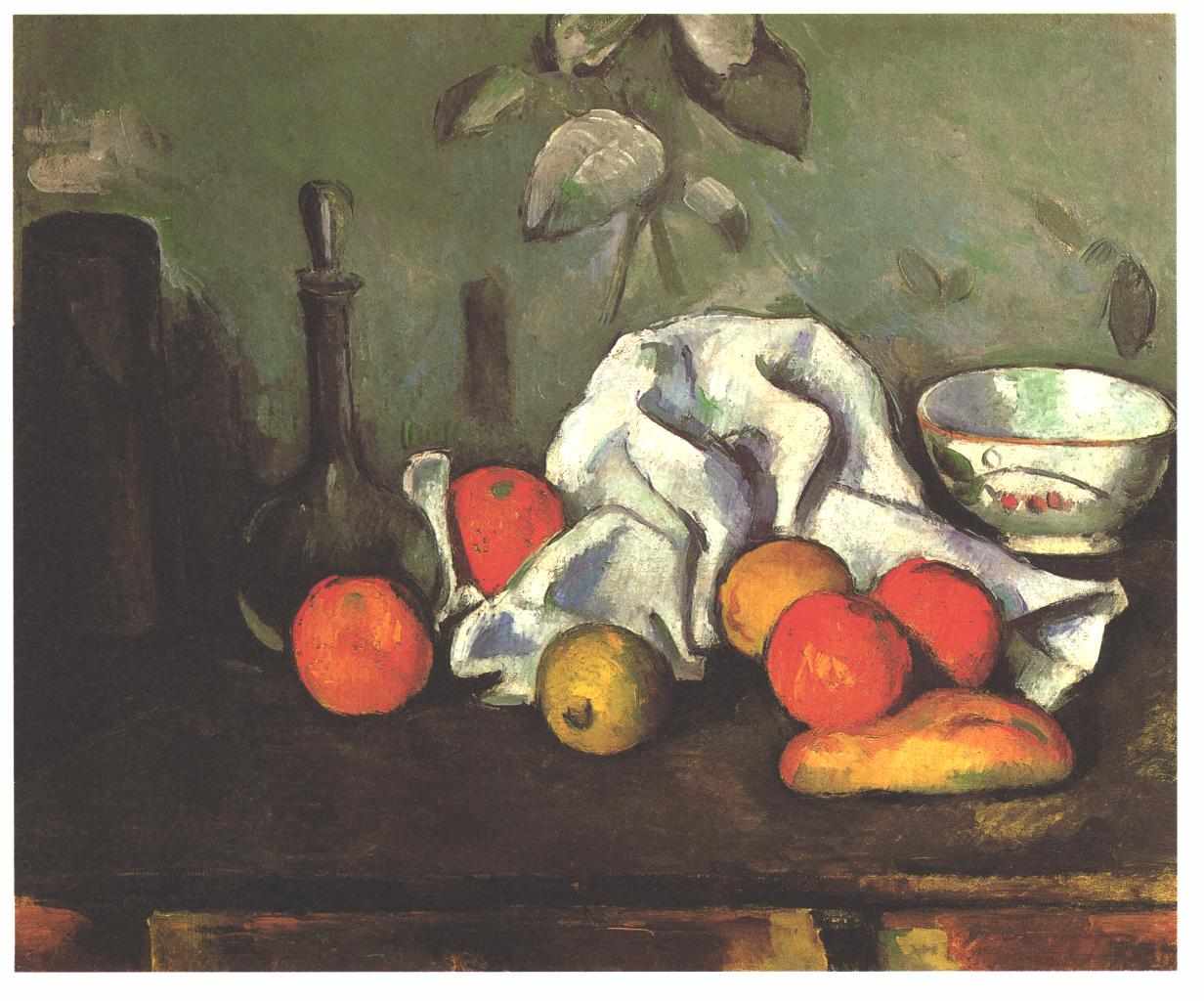I don’t have much interest in what could be labelled as ‘reality’. I’m more interested in the signs, symbols and codes we’ve created for reality. –Nicolas Party

René Magritte
Le Chant d'Amour, 1967
Collection of the Royal Museums of Fine Arts, Belgium
Still Life is emblematic of Nicolas Party’s inventive engagement with long-established classical painterly themes: a fresh, subversive vision that has catapulted him to critical and institutional acclaim. Inspired by ‘those brief moments of looking at a simple thing like fresh fruit and thinking, that’s beautiful’, the monumental work at first glance appears to represent a pile of oddly-shaped fruit, which upon closer inspection dissolves into two-dimensional abstract and biomorphic blocks of color (Nicolas Party, quoted in Sky Sherwin, ‘Nicolas Party’, W Magazine, 18 November 2015, online). Over the past few years, the artist’s fresh visual lexicon has cemented his reputation as one of the leading painters of his generation, a standing solidified by solo exhibitions including at the Magritte Museum (Brussels), M WOODS (Beijing), the Dallas Museum of Art, and the Hirshhorn Museum and Sculpture Garden (Washington, D.C.).
A classically trained painter, Party has devoted most of his practice to depicting the customary visual motifs associated with landscape, portraiture, and — as in the present work — still life. This pastel piece situates Party firmly in the tradition of still life painting, the heir to canonical figures such as Jean-Baptiste-Siméon Chardin, Pieter Claesz, and Francisco de Zurbarán, as well as the revered innovator of the orthodox pictorial subject - Paul Cézanne. Though he was born over a century later than his modernist forebear, Party likewise exploits the art historical convention of still life painting as a means of investigating contemporaneous interests; as Cézanne was preoccupied with a proto-Cubist flattening of the picture plane (see for example Still Life with Fruit, 1880), Still Life explores the omnipresence of technology and computer-generated imagery in a post-internet era. Also alluding to the tranquil, focused compositions of Giorgio Morandi and Milton Avery, whose distinctive portrayal of objects as single-colored forms undeniably foreshadow those of Party, Still Life betrays a veneration for the genealogy of still life painters while incorporating the artist’s own visual idiosyncrasies.
Redolent of the vacant, eerily smooth renderings of 3D forms, Still Life is a nod to Party’s decade spent working as a computer animator and lifelong interest in technology, which has had a conspicuous influence on his oeuvre. ‘We’re so used to seeing computer-generated images now that it has a big impact on how we see all images. I think this describes the look my figures have,’ the artist elucidated. ‘I see them almost as like a thin layer of something and I don’t know what is behind them’ (Nicolas Party, quoted in Loney Abrams, ‘Post-Internet Phenomenon Nicolas Party on the Importance of Painting Cats in the Digital Age’, Artspace, 19 October 2016, online).

Paul Cezanne
Still life with fruits, 1880
Collection of the Museum of Modern Art, New York
The artist ironically rendered the hollow, futuristic shapes of Still Life in pastel, a medium that was at the apex of its popularity at the turn of the 18th Century. Whilst computer animation is generally considered to be a detached, technological art form, pastels require an extremely careful, intimate application with the artist’s fingers, a medium and method that enables Party to ‘establish a real relationship with [his] work’ (Nicolas Party, quoted in ‘Interview: Nicolas Party’, Conceptual Fine Arts, 16 September 2015, online). In this sense, Still Life simultaneously pays homage to artistic modes of the past and future.
Evoking the disconcerting and enigmatic Surrealist compositions of René Magritte (see for example Le Chant d’Amour, 1967), the objects in the work are disquieting, even unsettling: the splendidly-coloured, uncannily flaccid fruit, articulated by their stems, morph into an ice cream sundae-esque mountainscape topped with a scarlet red cherry. Situated somewhere between fact and fiction, Still Life epitomises Party’s assertion that ‘I don’t have much interest in what could be labelled as “reality”. I’m more interested in the signs, symbols, and codes we’ve created for reality’ (Nicolas Party, quoted in ‘Nicolas Party: Curator’s Q&A’, Modern Art Oxford Blog, 15 February 2018, online). Coalescing the art of the Old Masters with French modernism whilst firmly situating his creation in our post-internet experience, Still Life encourages a closer look at the evolution of representation. As Hammer Museum’s curator Ali Subotnick explained at the opening of Party’s first exhibition in Los Angeles, ‘Nicolas collapses the past with the present and future…he never gets stuck in a formulaic pattern’ (Ali Subotnick, ‘Party Time’, Vogue, June 2018, p. 114).